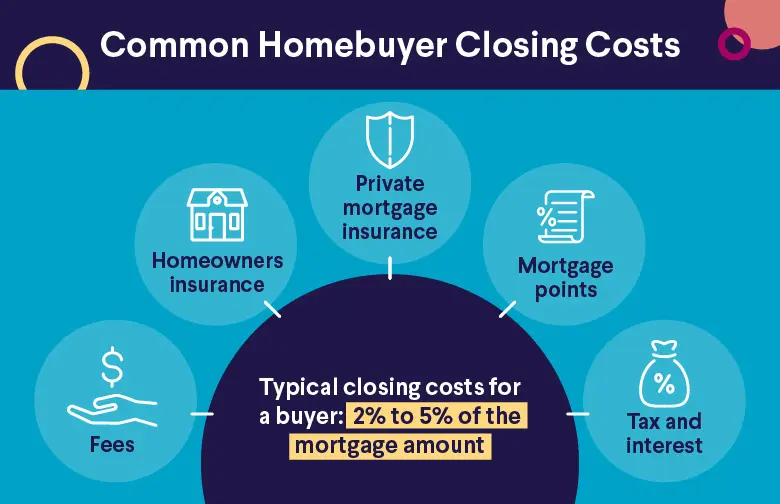5 Investment Strategies for Beginners
Table of Contents
There are a ton of investment strategies and ideas out there, and it can be difficult to figure out which one might be right for you. Simple strategies, particularly for beginners, include utilizing asset allocation, diversification, rebalancing, and buy-and-hold tactics.
With that in mind, investing is a powerful tool that allows you to put your money to work to help you reach future financial goals. But if you’re new to investing, you may be asking yourself what investment strategies should you pursue? Here are some strategies to help you get started.
Key Points
• Asset allocation is a strategy that involves choosing how to balance potential risk and reward within a portfolio.
• Diversification refers to managing risk with a mix of different investment types.
• Rebalancing includes shifting asset allocation and diversification mixes over regular periods of time.
• Buy-and-hold strategies involve buying investments and hanging on to them for long periods of time.
• Dollar-cost averaging is a strategy that involves investing a fixed amount at regular intervals.
5 Popular Investment Strategies for Beginners
There are many investment strategies for beginners to consider. Here are some that can help you get started.
1. Asset Allocation
Asset allocation refers to proportioning out different types of investments across your portfolio.
Once you’ve opened an investment account and you begin to build your portfolio, asset allocation is an important strategy to consider to help you balance potential risk and rewards. A typical portfolio might divide its assets among three main asset classes: stocks, bonds, and cash. Each asset class has its own risk and return profile, behaving a little bit differently under different market circumstances.
For example, stocks tend to offer higher gains, but they are also more volatile, presenting increased potential for losses. Bonds are generally considered to be less risky than stocks, while cash is typically more stable.
The proportion of each asset class you hold will depend on your goals, time horizon, and risk tolerance. Your goal is how much you aim to save. Your time horizon is the length of time you have before reaching your goals. And your risk tolerance is how much risk you’re willing to take to achieve your goals.
Your asset allocation can shift over time. For example, someone in their 30s saving for retirement has a long time horizon and may have a higher risk tolerance. As a result their portfolio may contain mostly stocks. As that person grows older and nears retirement, their portfolio may shift to contain more bonds and cash, which are typically less risky and less likely to lose value in the short-term.
2. Diversification
Another way to help manage risk in your portfolio is through diversification, which is building a portfolio with a mix of investments across assets to avoid putting all your eggs in one basket.
Here’s how it works: Imagine you had a portfolio consisting of stock from one company. If that stock does poorly your entire portfolio suffers.
Now imagine a portfolio consisting of many stocks, from companies of all sizes and sectors. Not only that, it also holds other investments, including bonds. If one stock suffers, it will have a much smaller effect on your overall portfolio, spreading out the risk of holding any one investment.
Get up to $1,000 in stock when you fund a new Active Invest account.*
Access stock trading, options, alternative investments, IRAs, and more. Get started in just a few minutes.
3. Rebalancing
Rebalancing involves shifting around your portfolio’s holdings to make sure it aligns with your broader strategy and goals.
Your portfolio can change over time, shifting your assets allocation and diversification. For example, if there is a bull market and stocks outperform, you may discover that you now hold a greater portion of your portfolio in stocks than you had intended.
At this point, investors typically rebalance their portfolio to bring it back in line with their goals, time horizon, and risk tolerance. In the example above, an investor may decide to sell some stock or buy more bonds, for instance.
4. Buy-and-hold Strategy for Investing
Market fluctuations are a natural part of the market cycle. However, investors may get nervous and be tempted to sell when prices drop. When they do, investors might lock in their losses and miss out on subsequent market rebounds.
Investors practicing buy-and-hold strategies tend to buy investments and hang on to them over the long term, regardless of short-term movements in the market. Doing so may help curb the tendency to panic sell, and it might also help minimize fees associated with trading.
Buy and hold might also affect an investor’s taxes. Holding a long-term investment vs. short-term one can make a big difference in terms of how much an individual pays in taxes.
If you profit from an investment after owning it for at least a year, it’s a long-term capital gain. Less than that is short-term. Capital gains tax rates can change, but generally, longer-term investments are taxed at a lower rate than short-term ones.
💡 Quick Tip: How to manage potential risk factors in a self-directed investment account? Doing your research and employing strategies like dollar-cost averaging and diversification may help mitigate financial risk when trading stocks.
5. Dollar-Cost Averaging
Dollar-cost averaging is a strategy in which individuals invest on a regular basis by making fixed investments on a regular schedule regardless of market prices.
For example, say an investor wants to invest $1,000 every quarter in an exchange-traded fund (ETF) that tracks the S&P 500. Each quarter, the price of that fund will likely vary — sometimes it will be up, sometimes it will be down. The amount of money the individual invests remains the same, so they are buying fewer shares when prices are high, and more shares when prices are low.
This strategy may help individuals avoid emotional investing. It’s also straightforward and can help investors stick to a plan, rather than trying to time the market.
The Takeaway
There are many different strategies and tactics that investors can use, and some are likely more beginner-friendly than others. Those could include asset allocation, diversification, rebalancing, and buying-and-holding strategies.
Investing is an ongoing process. Your life, goals, and financial needs will all change as your circumstances do. For example, may you get a raise at work, get married and have a child, or decide to retire early. Factors like these will change how much money you need to save and how you invest. Monitor your portfolio and make adjustments as needed.
Ready to invest in your goals? It’s easy to get started when you open an investment account with SoFi Invest. You can invest in stocks, exchange-traded funds (ETFs), mutual funds, alternative funds, and more. SoFi doesn’t charge commissions, but other fees apply (full fee disclosure here).
FAQ
Is rebalancing the same as diversification?
Rebalancing and diversification are not the same, though they’re similar. They can be used in tandem to manage investment risk, but the main difference is that rebalancing involves periodically adjusting investments to align them with your goals, while diversification involves spreading investment across asset types to manage risk.
What does a buy-and-hold strategy entail?
A buy-and-hold strategy is more or less what it sounds like: Buying investments, and holding onto them for a long period of time, despite short-term ups and downs in the market.
What is dollar-cost averaging?
Dollar-cost averaging is an investment strategy in which individuals invest a fixed amount on a regular schedule, regardless of market prices. This can help investors avoid timing the market, and over time can enable them to buy more investment shares when prices are low and fewer when prices are high.
INVESTMENTS ARE NOT FDIC INSURED • ARE NOT BANK GUARANTEED • MAY LOSE VALUE
For disclosures on SoFi Invest platforms visit SoFi.com/legal. For a full listing of the fees associated with Sofi Invest please view our fee schedule.
Financial Tips & Strategies: The tips provided on this website are of a general nature and do not take into account your specific objectives, financial situation, and needs. You should always consider their appropriateness given your own circumstances.
¹Claw Promotion: Probability of Member receiving $1,000 is a probability of 0.026%; If you don’t make a selection in 45 days, you’ll no longer qualify for the promo. Customer must fund their account with a minimum of $50.00 to qualify. Probability percentage is subject to decrease. See full terms and conditions.
Exchange Traded Funds (ETFs): Investors should carefully consider the information contained in the prospectus, which contains the Fund’s investment objectives, risks, charges, expenses, and other relevant information. You may obtain a prospectus from the Fund company’s website or by emailing customer service at [email protected]. Please read the prospectus carefully prior to investing.
Investment Risk: Diversification can help reduce some investment risk. It cannot guarantee profit, or fully protect in a down market.
S&P 500 Index: The S&P 500 Index is a market-capitalization-weighted index of 500 leading publicly traded companies in the U.S. It is not an investment product, but a measure of U.S. equity performance. Historical performance of the S&P 500 Index does not guarantee similar results in the future. The historical return of the S&P 500 Index shown does not include the reinvestment of dividends or account for investment fees, expenses, or taxes, which would reduce actual returns.
Tax Information: This article provides general background information only and is not intended to serve as legal or tax advice or as a substitute for legal counsel. You should consult your own attorney and/or tax advisor if you have a question requiring legal or tax advice.
Third-Party Brand Mentions: No brands, products, or companies mentioned are affiliated with SoFi, nor do they endorse or sponsor this article. Third-party trademarks referenced herein are property of their respective owners.
Disclaimer: The projections or other information regarding the likelihood of various investment outcomes are hypothetical in nature, do not reflect actual investment results, and are not guarantees of future results.
Dollar Cost Averaging (DCA): Dollar cost averaging is an investment strategy that involves regularly investing a fixed amount of money, regardless of market conditions. This approach can help reduce the impact of market volatility and lower the average cost per share over time. However, it does not guarantee a profit or protect against losses in declining markets. Investors should consider their financial goals, risk tolerance, and market conditions when deciding whether to use dollar cost averaging. Past performance is not indicative of future results. You should consult with a financial advisor to determine if this strategy is appropriate for your individual circumstances.
SOIN-Q425-033
Read more








